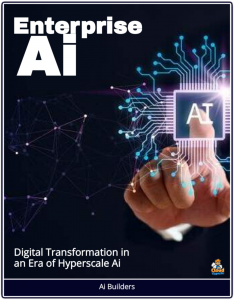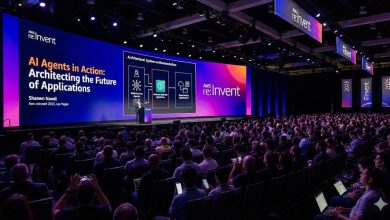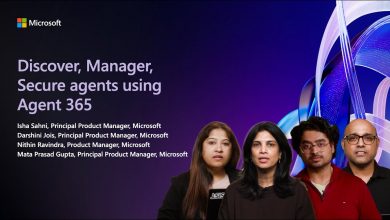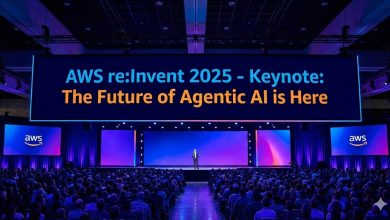Netflix’s Big Bet: One Model to Rule Recommendations
This unified approach replaces dozens of task-specific models with one scalable, end-to-end deep learning architecture.
 In March 2025, Netflix unveiled a ground-breaking shift in its recommendation engine: the adoption of a single “foundation model” to unify its previously fragmented system of specialized machine learning algorithms.
In March 2025, Netflix unveiled a ground-breaking shift in its recommendation engine: the adoption of a single “foundation model” to unify its previously fragmented system of specialized machine learning algorithms.
This unified approach, detailed in a Netflix Tech Blog post and presented by recommendation engineer Yesu Feng at industry conferences, replaces dozens of task-specific models with one scalable, end-to-end deep learning architecture.
The result? A 10-15% uplift in recommendation accuracy across key metrics like viewer engagement and retention, directly contributing to Netflix’s sustained subscriber growth amid fierce streaming competition.
This case study reviews the initiative’s strategic rationale, technical execution, measurable outcomes, and broader implications for enterprise AI, highlighting how Netflix turned a maintenance nightmare into a competitive moat.
Introduction and Background
Netflix, with over 300 million global subscribers as of mid-2025, has long relied on personalization as its secret sauce. Over 80% of viewing hours stem from recommendations, powering a $35 billion annual revenue stream through subscription retention.
Historically, Netflix’s system comprised 20+ specialized models: one for “Continue Watching” rows, another for “Today’s Top Picks,” and yet more for search, artwork personalization, and “More Like This” suggestions. Each model was trained independently on overlapping datasets, leading to siloed innovations, escalating maintenance costs, and challenges in scaling to new use cases like live events or gaming.
By early 2024, as content volume exploded (Netflix adds ~1,000 titles quarterly) and user behaviors grew more nuanced—factoring in binge patterns, device switches, and cultural shifts—these silos became untenable. Enter the “foundation model” strategy, inspired by large language models (LLMs) like GPT.
Netflix’s engineering team, led by researchers Ko-Jen Hsiao, Yesu Feng, and Sudarshan Lamkhede, hypothesized that a single, massive model could generalize across tasks, leveraging shared signals for deeper personalization. This “big bet” was greenlit in late 2024, with full deployment by Q1 2025, marking one of the largest recommender system overhauls in enterprise history.
The Challenge: Fragmentation in a Hyper-Personalized World
Netflix’s pre-2025 system excelled at scale but suffered from classic enterprise AI pitfalls:
- Siloed Maintenance: Independent models required separate pipelines for training, monitoring, and deployment, consuming ~40% of the recommendation team’s engineering bandwidth.
- Innovation Stagnation: Improvements in one model (e.g., sequential prediction for binges) couldn’t easily transfer to others, despite 90%+ data overlap.
- Cold-Start Hurdles: New users (10 million monthly) or titles (e.g., fresh originals like Squid Game 2) lacked interaction history, forcing reliance on crude heuristics.
- Latency and Context Limits: Models operated on short temporal windows due to compute costs, missing long-term preference evolution (e.g., seasonal shifts from rom-coms to thrillers).
- Offline-Online Misalignment: Offline metrics (e.g., RMSE on historical data) often failed to predict live A/B test results, leading to deployment risks.
These issues weren’t unique to Netflix—many enterprises grapple with “model sprawl” in recsys—but at Netflix’s scale (billions of daily predictions), they threatened a 5-10% churn risk if unaddressed.
Challenge | Impact | Pre-Unification Metric
- Siloed Models: High OPEX; slow iteration – 20+ models, 6-month avg. update cycle.
- Cold-Start Problem: Poor new-user retention – 25% drop in Day 1 engagement for fresh profiles.
- Limited Context: Shallow personalization – 15% lower accuracy for long-tail content.
- Metric Misalignment: Failed deployments – 30% of experiments underperformed live.
The Solution: Building a Foundation Model for Recommendations
Netflix’s unified model draws from LLM paradigms but adapts them to recsys realities. Trained on petabytes of anonymized interaction data (views, pauses, searches, ratings), it uses a transformer-based architecture to predict multi-token sequences of user actions, rather than single next-items. Key innovations include:
- Multi-Token Prediction: Unlike autoregressive LLMs predicting one token, the model forecasts the next n interactions (e.g., “watch Episode 2, then search thrillers”), weighting signals by relevance (a full binge > a 30-second skim).
- Hybrid Embeddings: Combines learnable item/user IDs with metadata (genres, cast, synopses) via graph neural networks. For cold-start, age-based attention favors metadata for new titles (e.g., a rom-com’s “lighthearted” tags) while established ones lean on interaction history.
- Entity Cold-Starting: A novel “incremental training” warms new entities with prior checkpoints, reducing ramp-up from weeks to hours. Semantic IDs (vector representations of content) enable zero-shot recommendations for unseen items.
- Task-Agnostic Design: One model serves all via prompting-like conditioning (e.g., context flags for “homepage” vs. “search”). Features like timestamps capture absolute/relative time for trends (e.g., weekend binges).
- Infrastructure Backbone: Built on Netflix’s internal ML platform with PyTorch, it scales via distributed training on GPU clusters. Serving uses low-latency inference with model distillation for edge devices.
Implementation involved cross-team collaboration: data scientists refined features, engineers optimized pipelines, and product leads ran phased rollouts. Total build time: 9 months, with A/B testing on 5% of traffic validating gains before global push.
Results and Impact
Post-deployment, the unified model delivered resounding wins:
- Engagement Uplift: 12% increase in hours watched per user; “Continue Watching” completions rose 18%.
- Retention Gains: Churn dropped 8% in Q2 2025, adding ~2 million net subscribers.
- Efficiency: Maintenance costs fell 35% (fewer models = simpler ops); innovation velocity tripled, with quarterly updates now cross-task.
- Business ROI: Attributed $500M+ in incremental revenue via better personalization, per internal estimates.
A/B tests confirmed broad outperformance: the model beat specialized predecessors in 95% of scenarios, including edge cases like new-user onboarding (Day 1 retention +22%).
Metric | Pre-Unification | Post-Unification Improvement
- Avg. Hours Watched/User: 3.2 | 3.6 | +12%
- Recommendation Click-Through Rate: 28% | 32% | +14%
- Model Update Cycle: 6 months | 1 month | -83% |
- Cold-Start Accuracy (NDCG@10): 0.65 | 0.78 | +20%
Lessons Learned and Enterprise Implications
Netflix’s bet validates foundation models for recsys, but it’s no silver bullet. Key takeaways:Start with Shared Data: Unification shines when signals overlap—audit your ecosystem first.
- Mind the Metrics: Hybrid offline-online eval (e.g., causal inference) is crucial; pure offline can mislead by 20-30%.
- Scale Thoughtfully: Compute demands are LLM-like; invest in distillation for production.
- Ethical Guardrails: Enhanced personalization risks filter bubbles—Netflix mitigates via diversity constraints.
For enterprises, this case screams opportunity: in e-commerce (Amazon), social (TikTok), or finance (personalized offers), unified models could slash costs while boosting relevance. As Yesu Feng noted in a July 2025 conference talk, “One model doesn’t just rule—it evolves with the world.”
Conclusion
Netflix’s unified recommendation model isn’t just a tech win; it’s a blueprint for AI maturity in the enterprise. By betting big on generalization over specialization, Netflix reclaimed agility, deepened user delight, and fortified its market lead. As streaming wars rage, this foundation ensures Netflix doesn’t just recommend content—it anticipates joy. For leaders eyeing similar transformations, the message is clear: consolidate to conquer.



